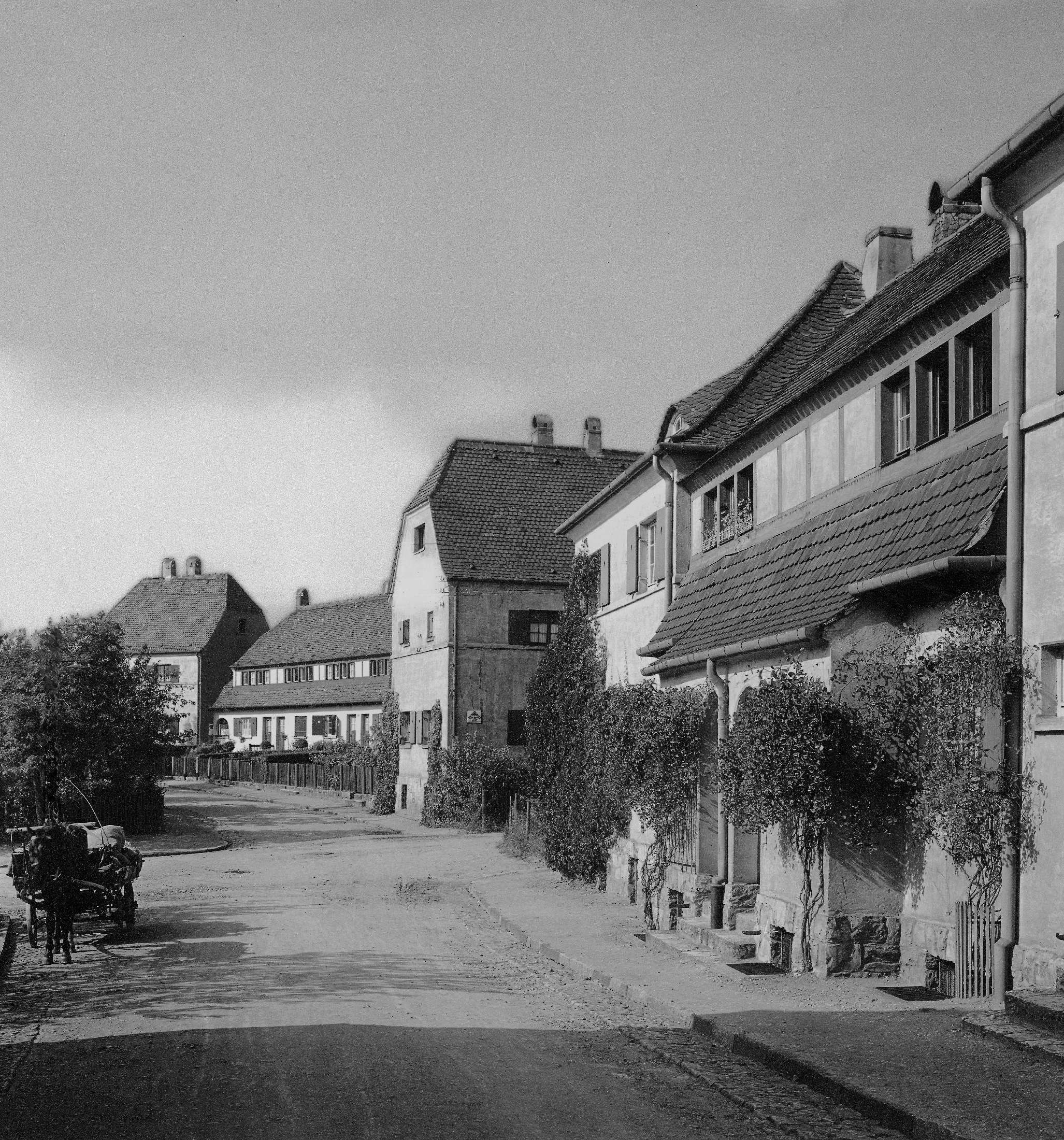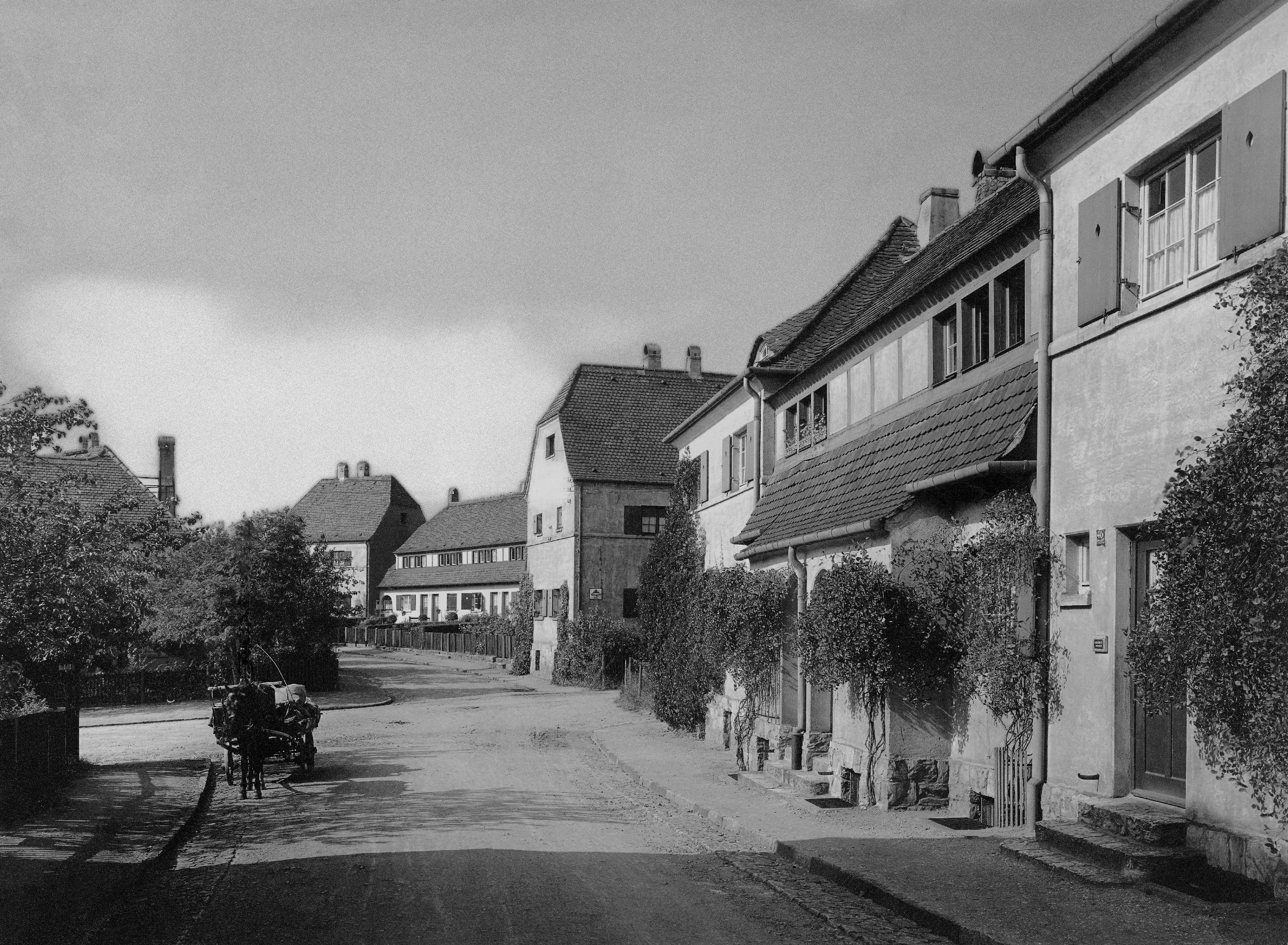Founding of a Unique Garden City
Preventing Property Speculators - Creating a Cooperative
At the beginning of the 20th century, Dresden was home to one of the most progressive centres in Europe. Not in the well-known, baroque old town, but in the hills to the north: in the new district of Hellerau. In 1908, Karl Schmidt, founder of Deutsche Werkstätten, laid the foundation stone there for the new company building, the garden city based on the English model - and for a new form of living (encompassing both housing and coexisting).
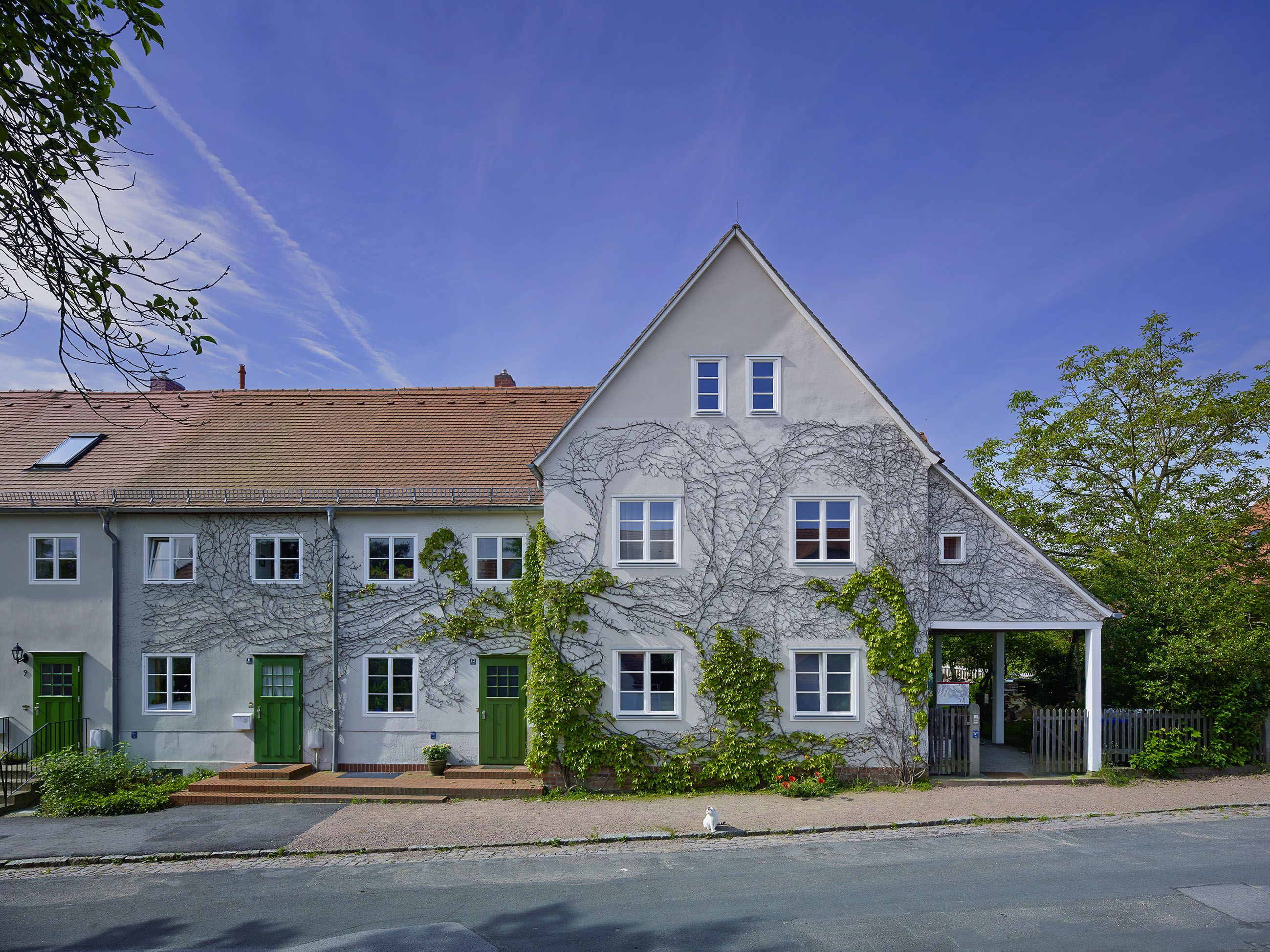
Hellerau is not only architecture, but represents the spirit of a new age and stands for an exceptionally reformist settlement experiment. In Hellerau, the Life Reform movement found a home, born out of a longing for social justice and social harmony. The settlement was planned as a counter-concept to the prevailing constraints of the Wilhelmine Empire and the negative consequences of industrialisation. As such, it is also an important testimony to Saxon industrial culture.
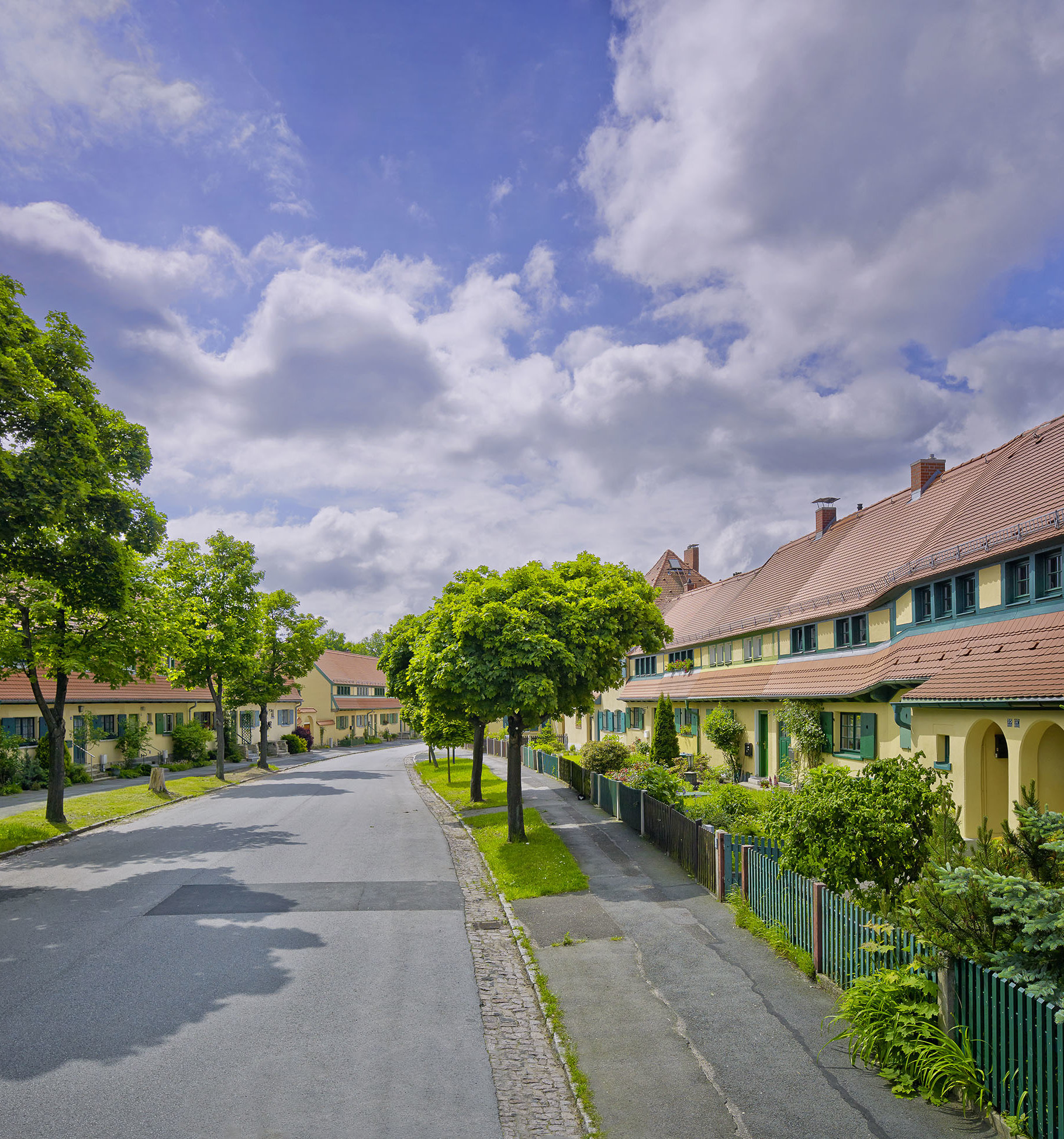
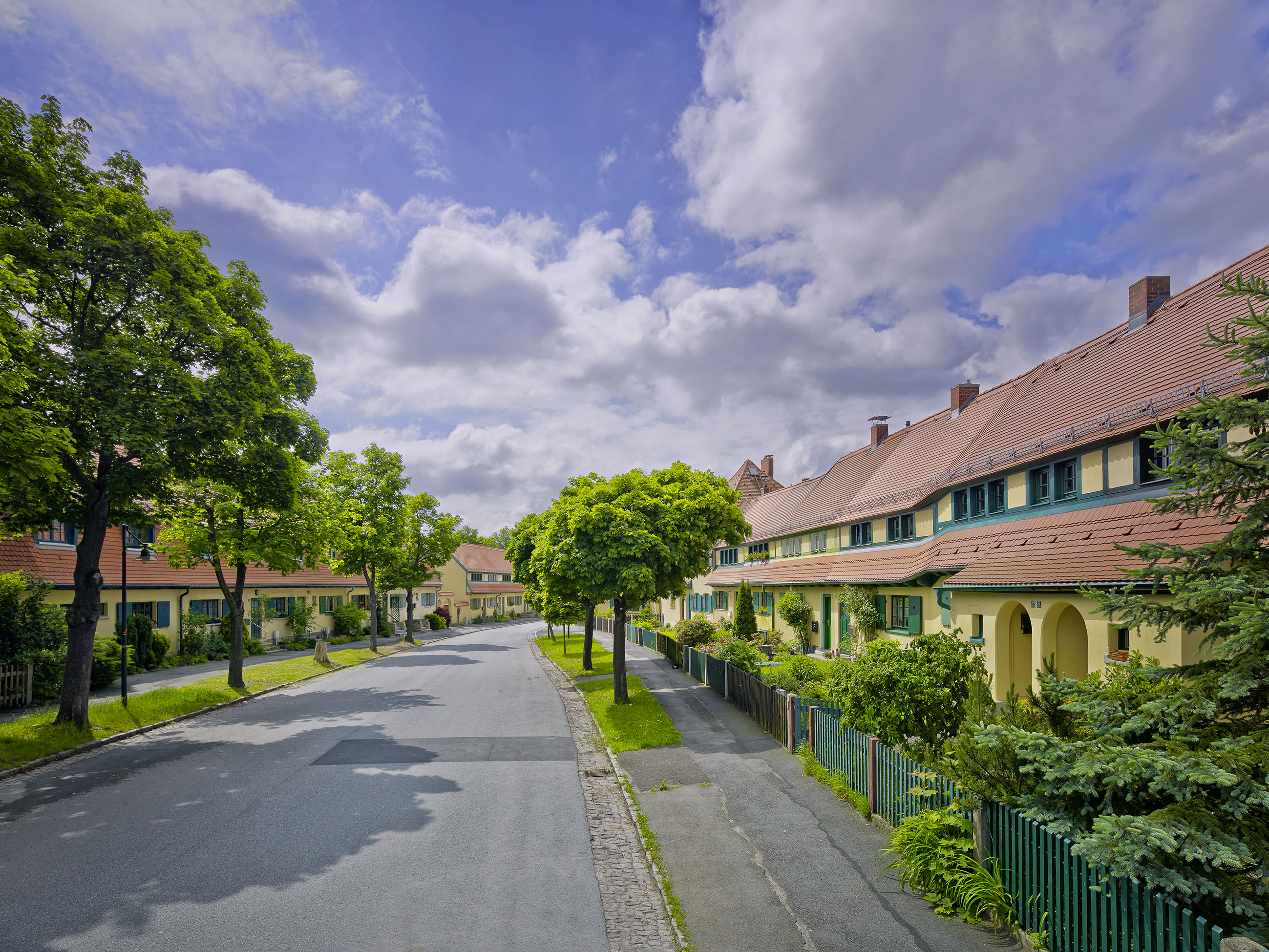
An important building block for Schmidt was the cooperative idea. This is still extremely relevant today, when looking at the current housing market. In those days, as today, housing was scarce and land prices skyrocketed. Then, as now, people were looking for alternatives and then, as now, one of the answers is: cooperative ownership of land. Ultimately, however, this is only one aspect that demonstrates the modernity of Hellerau's founding thoughts and the ideas of our company founder. Many more can be found by delving into the history of the Garden City of Hellerau and Deutsche Werkstätten.
